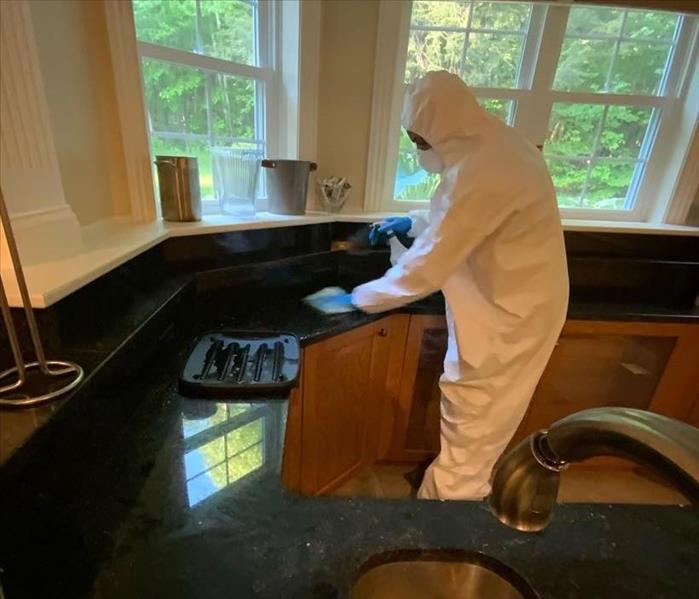Ensuring Sanitation: A Vital Step in Restoring Your Home After a Water Loss
5/28/2024 (Permalink)
 Proper sanitation helps eliminate moisture and removes any existing mold spores, preventing mold growth and further damage to your home.
Proper sanitation helps eliminate moisture and removes any existing mold spores, preventing mold growth and further damage to your home.
Water damage in your home can be a stressful experience, but restoring it to its preloss condition involves more than just drying out the affected areas. One critical aspect of the restoration process that often gets overlooked is sanitation. Proper sanitation is essential to ensure the safety and health of you and your family after a water loss. In this SERVPRO® blog post, we'll explore the importance of sanitation during home restoration after water damage and the steps involved in achieving a clean and healthy living environment.
Why Sanitation Matters:
Health Concerns: Standing water and moisture create the perfect breeding ground for bacteria, mold, and other pathogens. Without proper sanitation, these contaminants can pose serious health risks to occupants, leading to respiratory issues, allergies, and other health problems.
Preventing Mold Growth: Mold can begin to grow within 24 to 48 hours after water damage occurs. Proper sanitation helps eliminate moisture and removes any existing mold spores, preventing mold growth and further damage to your home.
Odor Removal: Water damage often leaves behind unpleasant odors caused by mold, mildew, and bacteria. Sanitizing the affected areas helps neutralize these odors, leaving your home smelling fresh and clean.
Steps for Sanitation During Home Restoration:
Safety Precautions: Before beginning the sanitation process, ensure that the area is safe to enter. Turn off electricity to prevent the risk of electrical shock, and wear personal protective equipment (PPE), such as gloves, masks, and goggles, to protect yourself from contaminants.
Thorough Cleaning: Use appropriate cleaning agents and disinfectants to clean all affected surfaces thoroughly. Pay special attention to areas that came into contact with contaminated water, such as floors, walls, and belongings.
Deodorization: Utilize specialized equipment and techniques to eliminate odors caused by water damage. This may include air scrubbers, ozone generators, or thermal fogging to neutralize odors at the molecular level.
Drying: Proper drying is crucial to prevent mold growth and maintain a healthy indoor environment. Use high-powered fans, dehumidifiers, and moisture meters to ensure that all moisture is removed from the affected areas.
Professional Assistance: While you can take certain sanitation measures on your own, it's essential to enlist the help of professional restoration experts like SERVPRO for thorough and effective sanitation. Our trained technicians have the expertise, experience, and specialized equipment to ensure that your home is properly sanitized and restored to a safe and healthy condition.
Conclusion:
Sanitation plays a critical role in the home restoration process after water damage. By prioritizing sanitation and following proper cleaning and disinfection procedures, you can ensure the safety and health of your family and protect your home from further damage. Remember, when in doubt, don't hesitate to contact SERVPRO for professional restoration services. We're here to help you every step of the way.






 24/7 Emergency Service
24/7 Emergency Service